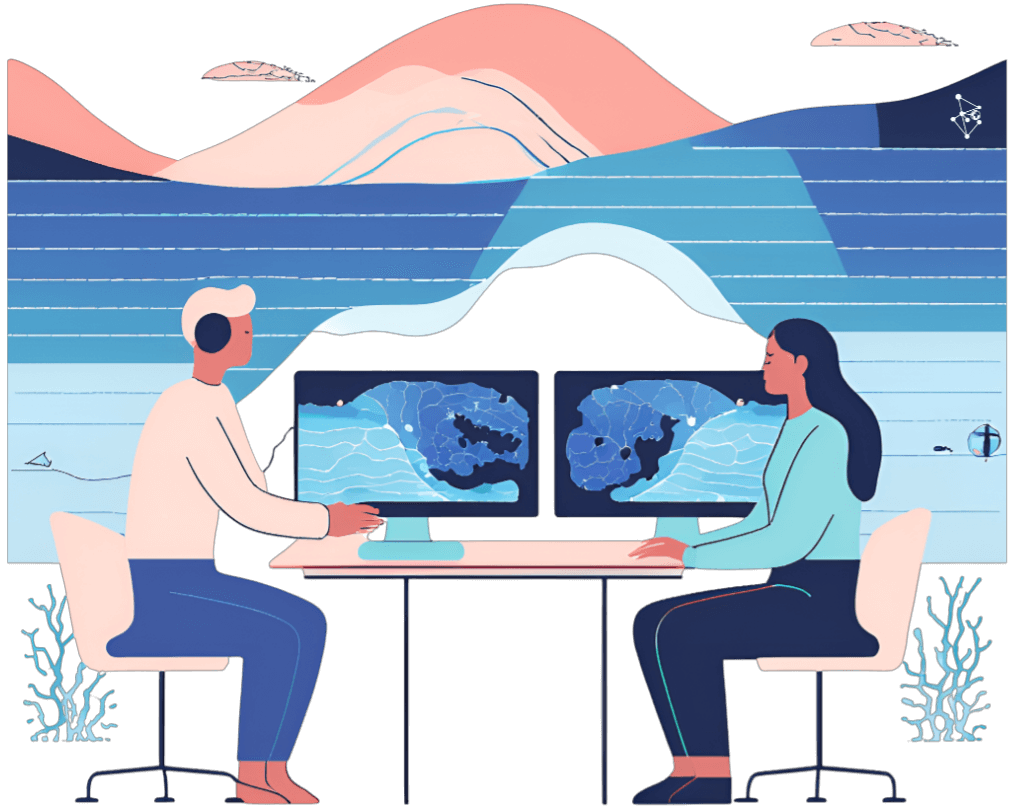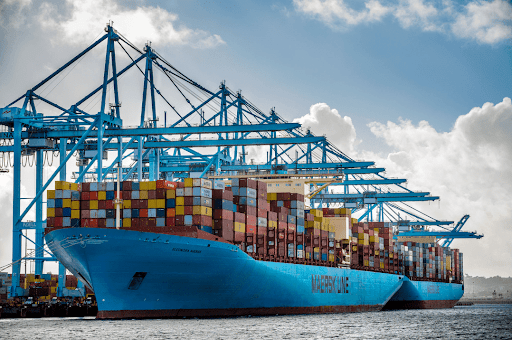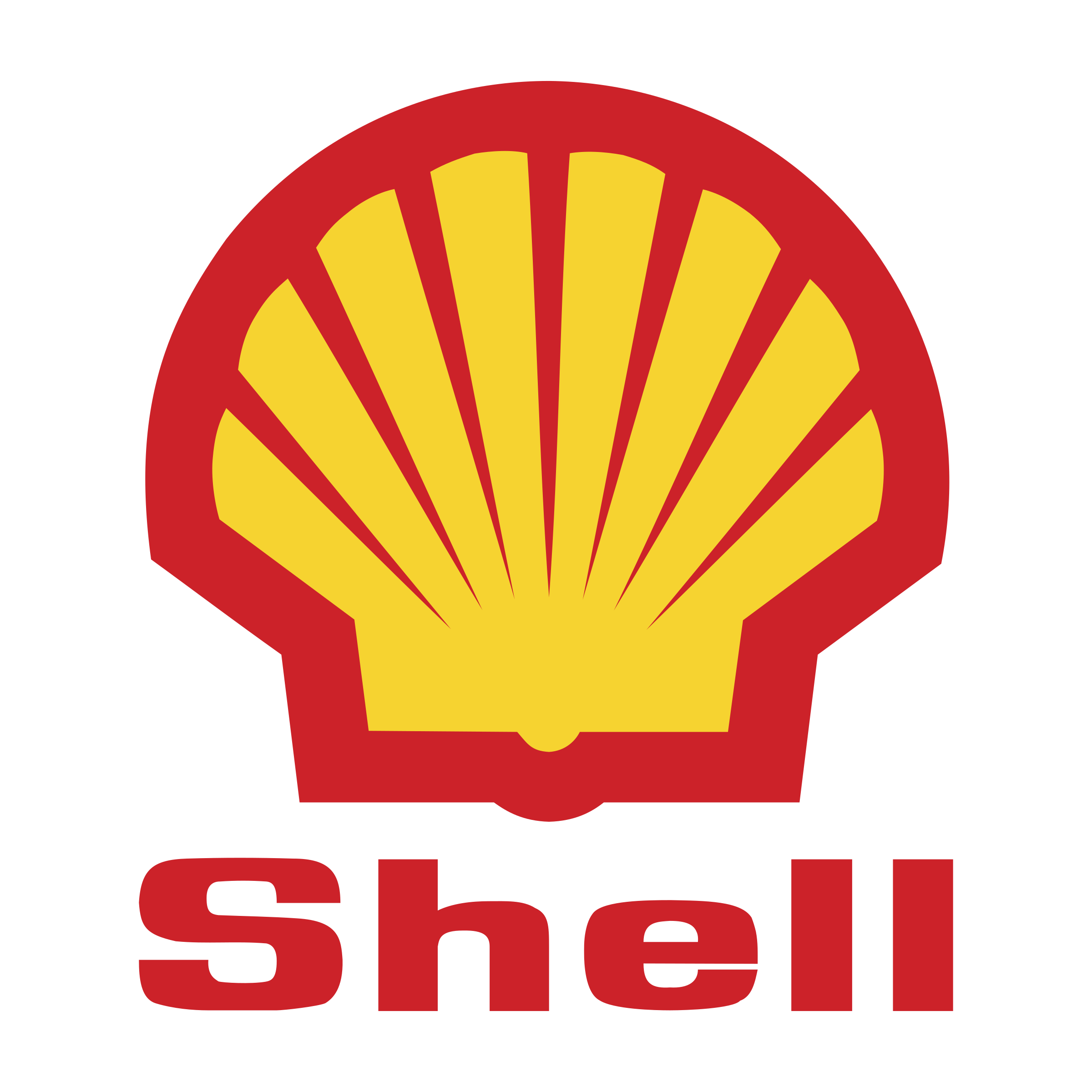Article
Toward Continuous Subsea Data
Get ready to unlock real value beyond your data

It's Already Happening
- 12-May-25: Fugro selected for pioneering USV seabed mapping initiative in Norway (Blue Eclipse® USV) [1].
- 27-May-25: GEOxyz Selects USV with LARS Trailer for Hydrographic Operations Across Belgium [2].
- 16-Jun-25: Saildrone Launches the Future of Maritime Surveillance in the Baltic Sea [3].
- 16-Jun-25: HydroSurv Expands into West Africa with REAV-47 USV Delivery to Geodetic Offshore Services Limited (GOSL) [4].
- 10-Jul-25: OceanAlpha's L25 USV Showcases Successful Autonomous Marine Survey Capabilities [5].
- 17-Jul-25: Subsea Europe Services Prepares State-of-the-Art USV and HAUV Fleet for Innovative Survey Inspection Project [6].
The age of autonomous vessel surveying is here - the time for continuous subsea data has arrived.
The first question is: Why is now the time? The second: What does a world of continuous data mean to me? And finally : What should I do about it? This article attempts to address each of these questions fully and empower you to make decisions now that maximise your success in the future.
Why is now the time?
A fundamental shift in demand
To build and maintain anything offshore, i.e. into or on the seabed, requires a plethora of subsea data because it is completely inaccessible by humans. Today, the biggest driver of subsea data demand is fixed-foundation offshore wind. The introduction of floating offshore wind, which will be even larger in scale and complexity, will perpetuate this further. To put some numbers on it, as illustrated in the graph below titled “Global offshore wind capacity forecast by country” from RenewableUK [7], it is estimated that global installed capacity will grow from ~100GW in 2025 to ~250GW in 2030.

Figure 1. Global Offshore Wind Capacity Forecast By Country [7]
More critically, offshore wind is the force to overcome the inertia of the flywheel of perpetually increasing amounts of subsea data. The first knock on effect is that once installed, there is the need for repeated surveying over the life of the windfarm. The second is that there is the need for this critical national infrastructure to be protected (militarily). Combined, this drives innovation that inevitably reduces costs, which inevitably opens up even more industries - like wave and tidal renewable energy; blue hydrogen production; and blue carbon farming. And so the cycle continues, completely shifting the demand for subsea data.
The advancement of enabling technologies
For this demand to be met, there has to be a fundamental shift in supply. The emergence of autonomous, unmanned, and lean-manned survey vessels is the most visible indicator of this. These are enabled by the advancement of the same technologies that enable continuous data: (1) semiconductors; (2) software (cloud, autonomy, machine learning, artificial intelligence); (3) communications (internet, over-the-horizon); and (4) sensors. In short, these technologies enable greater volumes of data, of a wider variety, to move through the acquisition-to-decision lifecycle faster.
The effect is that:
- Accessible data storage is near infinite.
- Accessible compute power is near infinite onshore (though costly). Compute power offshore is sufficient to enable autonomous vessel operation.
- Vessels can be remotely operated and accessed; or data can be delivered remotely to shore. Either way, data is no longer like a container that is moved from port to port, but a stream from source to consumption.
Earth observation using satellites has already gone through a similar transition. In 2013, Planet (https://www.planet.com/) launched their first constellation of shoebox or cube satellites. Today, their satellites have the capability to map the earth’s survey 5 - 7 times per day, at a resolution of 50cm. This has unlocked the ability to do things like inform search and rescue after a major weather event, identify the precision of a military strike, or monitor the deforestation of a specific area. These are examples not of mapping the earth’s surface, but rather being able to analyse changes in real-time to inform critical decisions. In summary, the advancement of enabling technologies means that today, you can work with data continuously in revolutionary new ways.
Our future demands it
As David Attenborough said: “After living for nearly 100 years on this planet, I now understand the most important place on earth is not on land but at sea.” [8]. “The ocean generates 50 percent of the oxygen we need, absorbs 30 percent of all carbon dioxide emissions and captures 90 percent of the excess heat generated by these emissions” [9]. Moreover, it is estimated that the total number of people working in the ‘ocean-based energy sector’ will grow from 559,000 in 2018 to 774,000 in 2050 [10]. Whichever way you look at it, we simultaneously need to grow the value harnessed from the oceans while significantly increasing the conservation of our oceans.
Value creation comes from unlocking new ways to solve existing problems, and in solving them, creating new problems that can be solved with more of the same resources. As any industry matures, value creation shifts from raw materials, to first derivative products or services, to second order derivatives, and so on. The value in earth observation was initially being able to map the earth’s surface, then it was to use those maps to inform what was done, now it is monitoring what is done to enable better decisions. Offshore wind is arguably still at the source or raw material stage. Green hydrogen production for electricity generation would be the second derivative; and hydrogen powered vessels the third. This all requires scaling up the industry, which is foundationally dependent on subsea data.
On the other hand, larger scale and more effective conservation is first and foremost about subsea data. Given that the oceans are over 316 million km2, truly understanding the impact of any human activity requires the collection and analysis of vast quantities of data. More importantly, to be effective, i.e. monitor change that informs decisions, this data needs to be collected and analysed continuously. Therefore, to ensure our future, which is our oceans, we need continuous subsea data.
What does 'continuous subsea data mean?
A global conveyor belt from acquisition-to-decision
A useful analogy to use is shipping. Before container shipping, transporting goods by sea was a one-off trip involving bulk carriers being fully loaded at one port, and fully unloaded at the next. Then, in 1966, the first international container ship introduced the era of continuous shipping and today, it is a global conveyor belt continuously distributing the right goods, to the right place, at the right time.
Today, the subsea data lifecycle is much like the one-off system pre-containers. Data is acquired, processed, and analysed for specific, one-off, individual projects. And that’s where its value ends.
A world of continuous subsea data, however, is equivalent to a world of continuous container shipping. It’s a world where data is acquired independent of a specific project, containerised, and made available to a multitude of consumers so that insights can be generated for a multitude of different applications.


Figure 2. Shipping Pre- and Post-Container
Starting with a different end in mind
To realise a world of continuous subsea data requires starting with a different end in mind. If you compare a modern container port with a pre-container one, the reason for this becomes clear. There is a foundational, infrastructural difference that means incremental improvement of the existing - like building bigger bulk carriers - eventually hits a scalability ceiling. Therefore, a completely new system needs to be built from the ground up, and it needs to be built starting with the intention of enabling continuous subsea data.
Fortunately, many of the necessary components are already available and mature, although not yet put together with this new end in mind. Cloud storage, cloud compute services, big data, machine learning, artificial intelligence, and so on - are now fully industrialised and accessible to any company. Like building any new system, however, the most critical step is in the architecture. Therefore, you need to find a way to put these components together into a system of continuous subsea data.
Unlocking value beyond the data
There is no hiding from the fact that completely revolutionising the subsea data system requires significant effort. So, the simple question is, why?
Again, back to the shipping example. Post-1966, as a result of the internationalisation of container shipping, “world merchandise trade” grew from around US$2 trillion to US$18 trillion by 2012 - a factor of 10 increase over just less than 50 years [11].
This kind of growth doesn’t happen just because potential supply is infinite - like with autonomous survey vessels. Rather, it comes from eliminating supply as a barrier to innovation, which leads to the re-imagining of supply chains. Nowhere is this more obvious than in semiconductors, where “a semiconductor product could cross international borders approximately 70 or more times before finally making it to the end customer.” [12]. In short, the real value and reason for such growth in trade, is because value creation moves far beyond the port.

Figure 3. Unlocking Value Beyond the Port [11]
What might these opportunities be? Some are already emerging, others will emerge as the increase in supply of data drives down costs. Fixed-bottom offshore windfarms are the obvious starting point - where the need for repeated surveying already exists. Floating offshore windfarms will significantly increase the scale of data acquisition required, and the need for regular surveys. This will drive innovation that will reduce costs further, opening up new markets like blue carbon farming. And the cycle will continue until a completely new economy exists out in the big blue. Continuous subsea data will unlock value far beyond the data itself.
What should I do about it?
Step 1: Accept the uncertainty
Autonomous vessels, emerging markets, a world of continuous subsea data… How much difference will it make? What impact will it have? Who will gain and who will lose? All valid questions, all with one thing in common, there is no definite answer.
Step 1 is to accept this uncertainty, and choose to take action (remembering no action, is in fact an action too).

Step 2: Undertake scenario planning
Scenario planning is a strategic market planning methodology specifically designed to help navigate highly uncertain times. Developed by Pierre Wack to help Shell find a way through the turbulent 1970s [13] - it is still central to their strategic planning today. The end objective is to generate several future scenarios (what-if stories, divergent from one another) that turn uncertainty into consciously made assumptions to enable decisions to be made today.
For example, imagine a world where autonomous vessels are ubiquitous and operating continuously, like satellites-of-the-sea. Imagine a world where you can buy subsea data like you can buy a book for your Amazon Kindle. Imagine a world where infrastructure development offshore has become as prolific as onshore. What would this mean for your company? What would be your biggest threats and opportunities? What would you need to start doing today, to mitigate these threats and capture the opportunities?
Run as a company wide exercise, scenario planning has been proven to uncover actionable ideas in times of deep uncertainty.
Step 3: Start small but start now
Change is never easy - yet it can start with the smallest of sparks. Aquallite Data’s Vector services were developed with a different end in mind - a world of continuous subsea data. They are a strategic pathway that empowers you to make the transition to harnessing this new reality. Take the first step today and explore our Vector services.
References
[1] Fugro (2025). Fugro selected for pioneering USV seabed mapping initiative in Norway. https://www.fugro.com/news/business-news/2025/fugro-selected-for-pioneering-usv-seabed-mapping-initiative-in-norway
[2] GEOxyz (2025). MDK selects USV with LARS Trailer for Hydrographic Operations across Belgium. https://www.geoxyz.eu/en/news/mdk-selects-usv-with-lars-trailer-for-hydrographic-operations-across-belgium
[3] Saildrone (2025). Saildrone Launches the Future of Maritime Surveillance Launches in the Baltic Sea. https://www.saildrone.com/news/saildrone-launches-the-future-of-maritime-surveillance-in-the-baltic-sea
[4] HydroSurv (2025). GOSL Nigeria Expands Uncrewed Survey Capability with HydroSurv REAV-47 USV Order. https://www.hydro-surv.com/news/news/press-release-gosl-nigeria-expands-uncrewed-survey-capability-with-hydrosurv-reav-47-order/
[5] OceanAlpha (2025). OceanAlpha Unveils L42 USV at Ocean Business. https://www.unmannedsystemstechnology.com/2025/04/oceanalpha-unveils-l42-usv-at-ocean-business/
[6] Ocean News & Technology (2025). Subsea Europe Services Prepares State-of-the-Art USV and HAUV Fleet for Innovative Survey & Inspection Project. https://oceannews.com/news/subsea-and-survey/subsea-europe-services-prepares-state-of-the-art-usv-and-hauv-fleet-for-innovative-survey-inspection-project/
[7] RenewableUK (2025). EnergyPulse blog. UK wind and global offshore wind: 2024 in review. https://www.renewableuk.com/energypulse/blog/uk-wind-and-global-offshore-wind-2024-in-review/
[8] Altitude Films (2025). Ocean with David Attenborough.
[9] United Nations (2022). The ocean - the world’s greatest ally against climate change. https://www.un.org/en/climatechange/science/climate-issues/ocean
[10] DNV (2023) Oceans Future to 2050. https://www.dnv.com/oceansfuture/
[11] Economist (2013). The Humble Hero. Containers have been more important for globalisation than freer trade. https://www.economist.com/finance-and-economics/2013/05/18/the-humble-hero
[12] Alam, S. et al. (2020). Globality and Complexity of the Semiconductor Ecosystem. Global Semiconductor Alliance and Accenture.
[13] Wack, P. (1985). Scenarios: Unchartered waters ahead. How Royal Dutch/Shell developed a planning technique that teaches managers to think about an uncertain future.